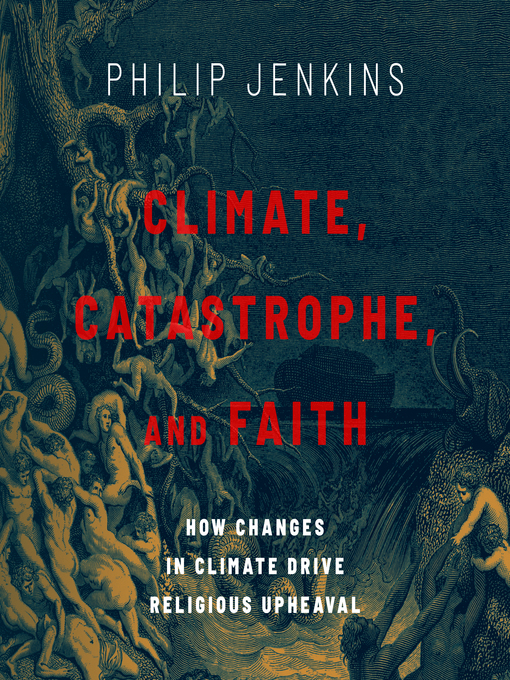Climate, Catastrophe, and Faith
How Changes in Climate Drive Religious Upheaval
-
Creators
-
Publisher
-
Release date
June 15, 2021 -
Formats
-
OverDrive Listen audiobook
- ISBN: 9781696605380
- File size: 287464 KB
- Duration: 09:58:52
-
-
Languages
- English
-
Reviews
-
Publisher's Weekly
March 29, 2021
In this uneven study, Jenkins (Laying Down the Sword), a professor of history at Baylor, attempts to chronicle how climate change has affected religions. “Time and again, climate convulsions have been understood in religious terms,” he writes, arguing that Abrahamic religions birthed in the “ecologically delicate” Middle East are intimately tied to stories of “drought, famine, plague, and natural disaster.” Jenkins focuses mostly on Western Christianity in the Northern Hemisphere to make his points, and connections between religious shifts and climate change tend toward the tenuous. For instance, he argues prime agricultural conditions in medieval Europe set the stage for the rise of grandiose cathedrals, and that “mob upsurges” resulting from climate-related famines of the 1640s led to “innovative religious structures” for controlling populations (and which also entrenched church hierarchies). Unfortunately, Jenkins’s limited lens causes him to miss some opportunities; he neglects to consider, for example, how the religions of Indigenous peoples in North America were affected by the same climate catastrophes as their mid-18th-century Christian contemporaries of the New England colonies, where “extraordinary weather events directed people’s minds to prospects of apocalypse.” Despite these limitations, Jenkins marshals an impressive amount of research on how specific weather events have affected populations. Those with a serious scholarly interest in European religious history will get the most from this.
-
Formats
- OverDrive Listen audiobook
subjects
Languages
- English
Loading
Why is availability limited?
×Availability can change throughout the month based on the library's budget. You can still place a hold on the title, and your hold will be automatically filled as soon as the title is available again.
The Kindle Book format for this title is not supported on:
×Read-along ebook
×The OverDrive Read format of this ebook has professional narration that plays while you read in your browser. Learn more here.

